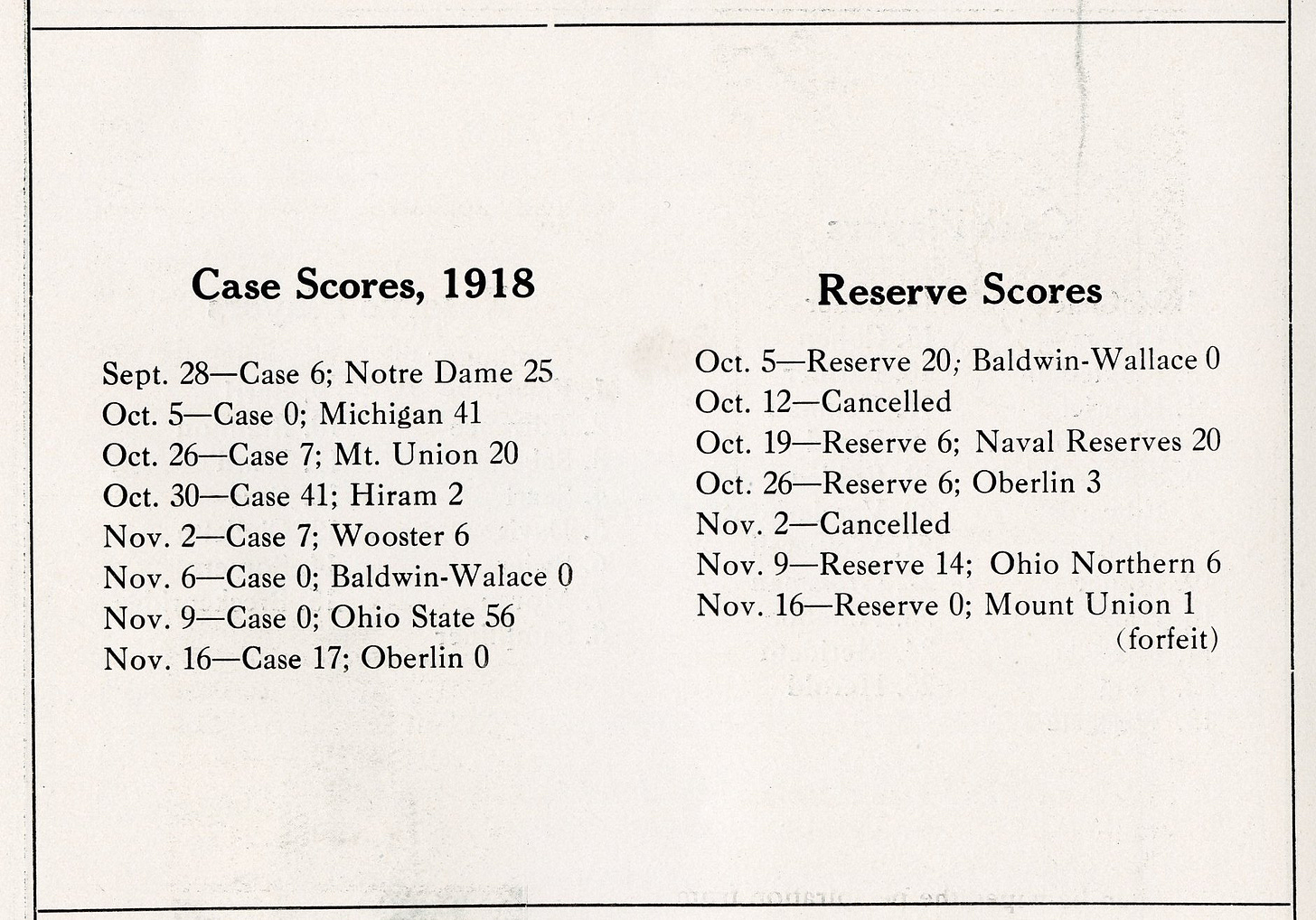Today’s Tidbit… The 1918 Case Institute and Western Reserve Seasons
Case Western Reserve in Cleveland resulted from the 1967 consolidation of Case Institute of Technology and Western Reserve University. Now a world-class university that competes at the DIII level, the separate schools competed at higher athletic levels in the past, as they did during WWI.
The 1918 college football season was the oddest in the game’s history. WWI was in full swing, and many collegians volunteered to serve, leaving the campuses and athletic fields behind. However, Uncle Sam had plans for those remaining on campus through the Student Army Training Corps (SATC). Conceived as a program the colleges and students opted into, a last-minute change of direction made the program mandatory for all able-bodied male students at participating universities. The announcement came in late September 1918, within days of the college football season’s start.
Under the program rules, male students received Army pay, wore uniforms on campus, took military courses and regular classes, and were allowed to leave campus only from sunup to sundown on Saturdays. The late announcement sent schools scrambling to revise their schedules, seeking games with nearby opponents where the travel and playing time fit in the Saturday window.
Case opened the season facing Notre Dame and Knute Rockne in his first game as a head coach. Tied 6-6 at the half, George Gipp and Curly Lambeau let loose in the second half to walk away with a 26-6 win. Losses to Michigan, Ohio State, and Mount Union came later, along with a 3-0-1 record against other small schools.
Western Reserve started with a win over Baldwin-Wallace and was scheduled to play the Cleveland Naval Reserves on October 12, but canceled the game due to the death of their SATC commander, Capt. Julian B. Sanford, a victim of the Spanish Flu. The game was rescheduled for the following week and saw Western Reserve use a professional player in the game since SATC eligibility rules allowed all students to play regardless of their amateur standing. Still, Cleveland Naval was one of the nation’s top teams in 1918 and easily won the game.
A win over Oberlin preceded the campus going under quarantine, causing another cancellation. In addition, several backfield members were called to active duty, leaving the team to reorganize its roles late in the season.

After an uneventful victory over Oho Northern, Western Reserve met Mt. Union, a game in which the teams were tied 7-7 with 5 minutes to play. However, at that point, the Western Research quarterback fielded a punt near the goal line and was tackled in the end zone by Mt. Union. Western Reserve, the umpire, and the linesman contended that the tackle took him into the end zone and the play should be a touchback. Still, the referee ruled otherwise, awarding a safety to Mt. Union. After arguing the call, Western Reserve left the field, so the game ended as a 0-1 forfeit rather than a 7-9 loss.
Case and Western Reserve met for their rivalry game on Thanksgiving Day despite the Spanish Flu lingering in the area.
Details of the game are few, but we know Case scored the first touchdown, keeping the ball on the ground until the final minutes when they tossed it a few times in desperation. Meanwhile, Western Reserve mixed their air and ground attacks to score two touchdowns, winning the rivalry game 14-7.
The game ended the 1918 season marred by war, disease, and their after-effects. Friends and classmates from other years and institutions mustered out of the service, most of those in Europe returning by July 1919. College campuses and football returned to normalcy for the 1919 season.
Football Archaeology is reader-supported. Click here to buy one of my books or otherwise support the site.




